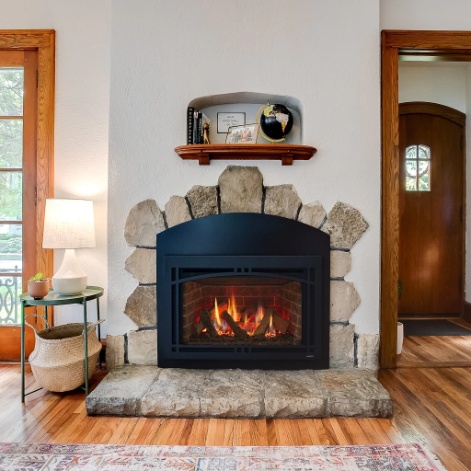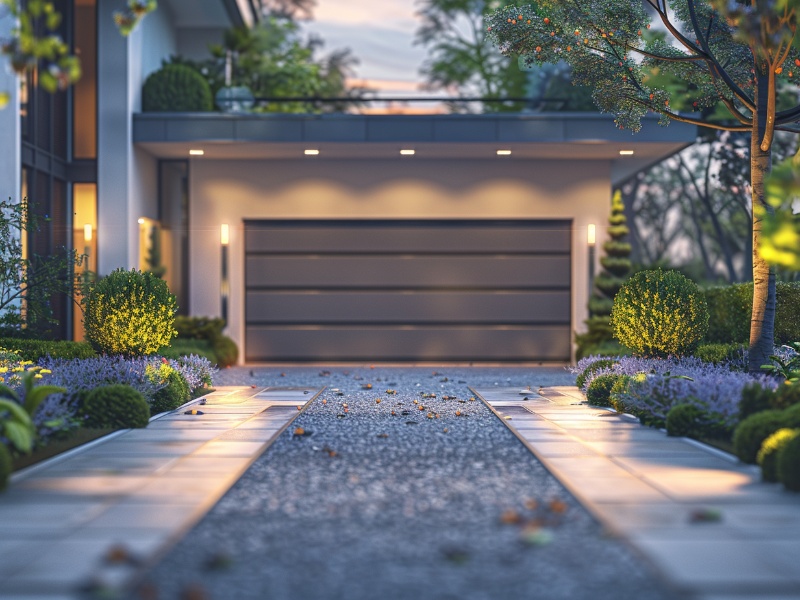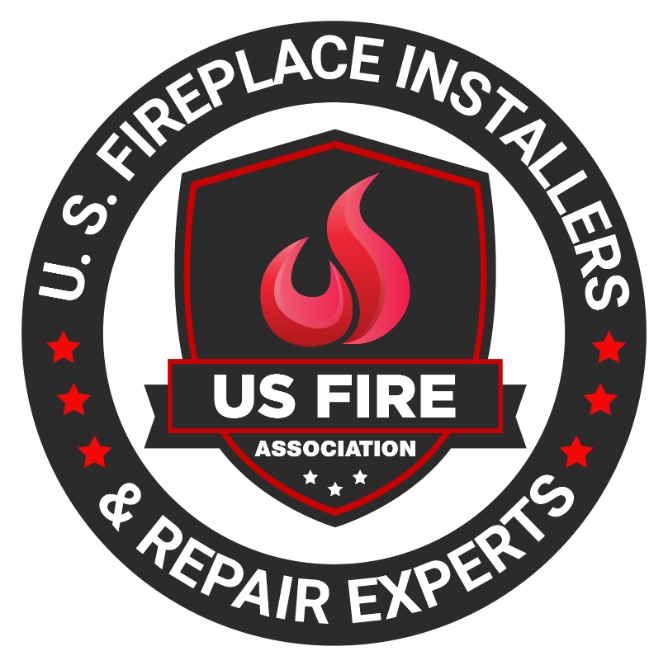Table of Contents
When building or renovating your home, it is imperative to time your gas fireplace installation perfectly with your renovation.
Enhancing the value and comfort of your home through the installation of a gas fireplace during a renovation can have a significant impact.
However, before you undertake the installation process, consider several crucial factors.
These factors range from evaluating the layout and requirements of your home to selecting the most suitable type of gas fireplace.
Thorough preparation is essential.
This article aims to provide guidance on the essential steps and considerations involved in achieving a smooth installation process.
We will focus on the optimal timing for the installation of a gas fireplace in conjunction with a renovation project to maximize results.
Benefits of Installing a Gas Fireplace During Renovation
Incorporating a gas fireplace into your home renovation presents a myriad of advantages.
These advantages include proficient heating, augmented property worth, and heightened comfort and ambiance within your living quarters.
This juncture serves as an opportune moment to seamlessly amalgamate such a heating fixture with your home enhancement initiatives.
Enhancing Your Home’s Value and Comfort
The addition of a gas fireplace can significantly augment the value and comfort of your home.
It offers a warm and inviting ambiance while serving as an aesthetically pleasing focal point within your living area.
Furthermore, aside from its practical function of providing warmth during colder seasons, it contributes an element of sophistication to your interior design.
The gentle, flickering flames emitted by the fireplace create a serene atmosphere.
This atmosphere is conducive to relaxation after a long day or for hosting social gatherings with friends and loved ones.
Additionally, a gas fireplace can enhance the overall allure of your residence, potentially increasing its appeal to prospective buyers in the event of a future sale.
In essence, investing in a gas fireplace is a strategic means of elevating the ambiance of your living environment and improving the overall quality of your home.
Factors to Consider Before Installing a Gas Fireplace
Before commencing the installation of a gas fireplace, it is imperative to consider numerous factors.
These include safety regulations, building codes, and permit prerequisites to guarantee a compliant and effective installation process.
Assessing Your Home’s Layout and Needs
It is pivotal to conduct a comprehensive assessment of your residence’s layout and specific heating requirements.
This assessment ensures that the gas fireplace installation harmonizes effectively with your renovation project.
By methodically scrutinizing the dimensions of the space, including room size and configuration, you can determine the most suitable placement for the gas fireplace.
It is advisable to contemplate elements such as proximity to existing gas lines and ventilation prerequisites.
To ensure both safety and efficiency, it is highly recommended to solicit professional guidance from a certified heating specialist or fireplace installer.
These professionals can offer expert counsel on selecting the appropriate type and size of gas fireplace that aligns with your heating needs and lifestyle preferences.
Seeking professional assistance will further ensure proper installation and compliance with pertinent local building codes and regulations.
Preparing for Gas Fireplace Installation
The process of preparing for a gas fireplace installation entails a series of crucial steps and considerations.
This includes engaging the services of a certified professional contractor, verifying the correct gas line connections, and establishing an effective venting system.
Important Steps and Considerations
Observing critical steps and considerations during the preparatory phase of a gas fireplace installation is essential to uphold fire safety standards.
It is imperative to strictly adhere to the installation guidelines provided by the manufacturer.
This adherence guarantees the optimal performance and durability of the gas fireplace.
Attention to meticulous detail is crucial, including selecting an appropriate location for the unit and ensuring proper ventilation to mitigate potential risks.
Emphasizing fire safety protocols is vital.
This includes maintaining adequate clearances from combustible materials and conducting thorough inspections of ventilation systems and gas lines to detect potential leaks.
Thorough planning and precise execution not only avert complications during the installation process but also instill confidence in the long-term safety of occupants.
Timing Your Gas Fireplace Installation
Ensuring the timing of your gas fireplace installation is crucial for achieving prompt completion of your renovation project.
This timing also secures the availability of contractors, particularly during peak seasons.
Coordinating with Other Renovation Work
Ensuring the coordination of the gas fireplace installation with concurrent renovation activities is essential.
This coordination maintains a cohesive project schedule and facilitates the timely deployment of the heating apparatus.
A valuable strategy to synchronize the fireplace installation with the existing construction work involves close collaboration with all involved contractors.
By disseminating comprehensive plans and timelines, each party can harmonize their responsibilities.
This approach helps avert any conflicts or impediments in the project timeline.
It is advisable to appoint a designated project manager to supervise the entirety of the renovation endeavor.
This appointment guarantees the seamless progression of each facet, including the installation of the fireplace.
Establishing open channels of communication and conducting regular progress meetings proactively identifies and rectifies any potential setbacks.
This ensures the project’s adherence to its designated course.
Choosing the Right Type of Gas Fireplace
Selecting the appropriate gas fireplace necessitates a thorough comparison of various models and features.
This comparison helps identify an energy-efficient and contemporary design that aligns with your heating requirements and enhances the aesthetic appeal of your home.
Comparing Different Options and Features
The process of comparing different gas fireplace options and features aids in selecting cost-effective heating equipment.
This equipment provides design flexibility and incorporates advanced heating technology.
When assessing gas fireplace models, consider the expenses associated with the initial purchase as well as the long-term operational costs.
While some models may entail a higher upfront cost, they could prove to be more efficient over time.
This efficiency results in savings on heating expenditures.
The design flexibility inherent in gas fireplaces enables individuals to choose from various styles, sizes, and installation options.
These options align with their aesthetic preferences and spatial requirements.
Progressions in heating technology, such as thermostatic controls and energy-efficient features, significantly enhance the overall performance and effectiveness of these fireplaces.
Frequently Asked Questions
1. How can I time my gas fireplace installation perfectly with my renovation?
The key to timing your gas fireplace installation perfectly with your renovation is to plan ahead. Make sure to communicate with your contractor and have a clear timeline for both projects. It may also be helpful to schedule the fireplace installation towards the end of the renovation process.
2. Will installing a gas fireplace affect my renovation timeline?
While it may add a few days to your renovation timeline, proper planning and communication with your contractor can minimize any delays. It’s important to consider the benefits of having a cozy fireplace in your newly renovated space and plan accordingly.
3. What are the benefits of installing a gas fireplace during a renovation?
Installing a gas fireplace during a renovation allows for seamless integration into your new space. It can also help save on installation costs by utilizing the existing construction process and materials.
4. Can I install a gas fireplace on my own during a renovation?
It is highly recommended to hire a professional for gas fireplace installation, especially during a renovation. They have the knowledge and experience to ensure proper installation and safety measures are taken.
5. What should I consider when deciding on the timing for my gas fireplace installation?
Consider the overall timeline for your renovation, the availability of your contractor, and any special requirements for your gas fireplace installation. It’s also important to take into account the weather and potential delays that may occur during the installation process.
6. Are there any potential challenges to timing a gas fireplace installation with a renovation?
One potential challenge is coordinating with multiple contractors and ensuring all timelines align. It’s also important to factor in any necessary inspections or permits for the gas fireplace installation, which may take additional time.
7. What types of gas fireplaces are available for installation?
There are various types of gas fireplaces available, including vented, vent-free, and direct vent options. Each type has different features, efficiency levels, and aesthetic styles to meet your needs.
8. How do I ensure compliance with building codes during installation?
To ensure compliance, consult with a certified professional contractor who is knowledgeable about local building codes and safety regulations regarding gas fireplace installations.
9. What common safety regulations should I follow when installing a gas fireplace?
Common safety regulations include maintaining proper clearances from combustible materials, ensuring adequate ventilation, and obtaining necessary permits prior to installation.
10. How can a gas fireplace enhance my home’s ambiance?
A gas fireplace provides a warm, inviting atmosphere with flickering flames that contribute to relaxation and aesthetic appeal while also serving as a focal point in your living space.
Latest Articles

What Is An NG (Natural Gas) Indicator And Why You Need It For Your Fireplace
Table of Contents1 Understanding Natural Gas Fireplaces2 What is an NG Indicator?3 Importance of NG Indicators for Safety4 Types of NG Indicators5 Installation and Maintenance of NG Indicators6 Signs of a Faulty NG Indicator7 Frequently Asked Questions Natural gas fireplaces are a favored option among numerous homeowners due to their convenience and effectiveness. But, what is an NG (Natural Gas) indicator and why you need it for your fireplace? It is imperative to comprehend how they function and the significance of having an NG (Natural Gas) indicator for safety purposes. This article delves into the definition and significance of NG indicators. We will discuss the potential hazards associated with the absence of one and the various types of indicators accessible. Also, we will discuss installation and maintenance recommendations, and methods to recognize and rectify issues with malfunctioning indicators. Stay well-informed and ensure the safety of your home by referring to this exhaustive guide. Understanding Natural Gas Fireplaces Natural gas fireplaces serve as an efficient and convenient heating option for numerous households. They utilize natural gas as a fuel source to deliver consistent warmth and ambiance. How They Work and Why They Need NG Indicators The operation of natural gas fireplaces involves igniting natural gas to generate heat. This process requires diligent monitoring to ensure both safety and efficiency, a task facilitated by the use of NG indicators. NG indicators play a critical role in detecting potential gas leaks. They enable residents to promptly address and mitigate any associated hazards. Through continuous monitoring of gas levels and providing timely warnings and alerts, NG indicators uphold a secure indoor environment. It is imperative to ensure that these indicators function properly to facilitate the effective operation of natural gas fireplaces. This helps mitigate the inherent risks linked to gas leaks. What is an NG Indicator? An NG indicator is a specialized device equipped with advanced sensors and technology. It is specifically designed to detect natural gas leaks and monitor gas pressure in appliances, such as fireplaces. Definition and Purpose The NG indicator functions as a detector that monitors gas appliances for potential leaks. It provides essential functionality to ensure safety in households utilizing natural gas. These detectors play a crucial role in protecting residences by notifying occupants of dangerous gas leaks long before they escalate into perilous situations. Through continuous monitoring of gas levels in the vicinity, NG indicators offer an additional layer of protection. This is particularly important in properties that rely on gas-operated fireplaces or stoves. These devices not only help avert potential disasters but also enhance the overall peace of mind of homeowners. They assure them that their living spaces are equipped with reliable safety features. Importance of NG Indicators for Safety Natural gas indicators are essential for maintaining safety in households equipped with natural gas appliances. These devices serve as a proactive measure to promptly detect gas leaks. This offers homeowners a sense of security and assurance. Potential Dangers of Not Having an NG Indicator The absence of an NG indicator in residences equipped with natural gas appliances can pose significant hazards. This includes the risk of undetected gas leaks , carbon monoxide poisoning , and pilot outages that may lead to dangerous situations. These potential risks can profoundly impact indoor air quality. They directly influence the health and safety of individuals residing in the household. Undetected gas leaks can go unnoticed, gradually permeating the air and creating a potentially explosive environment. Insufficient ventilation from undetected exposure to carbon monoxide can lead to serious health complications. These range from mild symptoms such as dizziness to fatal poisoning. Without proper monitoring from an NG indicator, families are left susceptible to these concealed threats. This underscores the critical importance of implementing proactive measures to mitigate such risks. Types of NG Indicators Indicators for Natural Gas (NG) are available in diverse types. Each presents distinct detection capabilities tailored to specific requirements, encompassing both manual and automated alternatives. Manual vs. Automatic Indicators Manual NG indicators require user intervention for monitoring gas levels and identifying leaks. On the other hand, automatic indicators employ sophisticated technology to deliver continuous, real-time monitoring. This heightened efficiency and oversight enhance safety protocols. Conventional manual indicators rely on individuals to physically inspect and evaluate gas levels periodically. This renders them more susceptible to human errors. Conversely, automatic indicators feature sensors capable of promptly detecting even the most minute fluctuations in gas levels. This establishes a more dependable and precise monitoring mechanism. Automatic indicators can activate alerts and shut-off systems upon detecting a leak. This ensures immediate action to avert potential hazards. This advanced technology enhances safety protocols and instills a sense of command and assurance among users. Installation and Maintenance of NG Indicators The reliable and accurate performance of NG indicators necessitates proper installation and consistent maintenance. This often entails professional installation and adherence to recommended service guidelines. Proper Installation and Regular Maintenance Tips The proper installation of NG indicators involves adhering to the specifications in the user manual. Maintenance protocols entail strict adherence to a predetermined maintenance schedule to ensure sustained operational efficiency. During the installation phase, it is imperative to verify that the NG indicators are securely affixed in the designated location as stipulated by the manufacturer. Crucial steps include confirming power source compatibility and ensuring proper grounding of the device to optimize performance. Calibration of the indicator must be executed meticulously to ensure precise readings. Regarding maintenance, essential practices include regular inspection for signs of wear, thorough cleaning of the indicator components, and routine functionality tests. By allocating time to a consistent maintenance regimen, the NG indicator can operate with optimal efficiency over an extended duration. Signs of a Faulty NG Indicator Recognizing indicators of a malfunctioning NG indicator is essential for upholding safety and performance standards. Inaccuracies and detection issues can undermine the efficacy of these devices. Identifying and Addressing Issues The process of identifying and addressing issues related to NG (natural gas) indicators requires a systematic troubleshooting approach. This ensures their optimal performance

What You Need To Know About Gas Log Set Safety And Installation Considerations
Table of Contents1 Understanding Gas Log Sets2 Safety Considerations for Gas Log Sets3 Installation Guidelines for Gas Log Sets4 Maintaining and Troubleshooting Gas Log Sets5 Frequently Asked Questions Gas log sets are a favored option among homeowners seeking to enjoy the comfort and atmosphere of a conventional fireplace without the inconvenience of wood. This article tells you what you need to know about gas log set safety and installation considerations. Before incorporating one into your residence, it is imperative to understand the safety considerations associated with their use. This discussion delves into the potential hazards linked with gas log sets. It presents crucial precautions to uphold the safety of your home. Also, it outlines proper installation procedures and offers insight into common errors to avoid. Finally, it provides advice on maintenance and troubleshooting. Gain comprehensive knowledge on gas log set safety and installation considerations. Understanding Gas Log Sets Comprehending gas log sets is essential for individuals seeking to elevate their fireplace experience, and for gas lag set safety and installation. These heating appliances can operate on either natural gas or propane. In addition, they are available in a range of styles, including vented, ventless, and vent-free options. They provide an array of benefits and customization opportunities through various fireplace accessories. What are Gas Log Sets? Gas log sets are meticulously crafted artificial logs. They are designed to imitate the appearance and functionality of authentic wood logs within fireplaces. These gas log sets typically consist of ceramic or refractory concrete logs that have been skillfully molded and painted. This allows them to replicate the natural grain and texture of real wood. The logs are arranged in various configurations within the fireplace. They establish a realistic and welcoming ambiance. In addition to the logs, gas log sets often include fireplace accessories such as glowing embers. Accessories also include decorative stones, and even pine cones to enhance the overall aesthetic appeal. Homeowners can select from an array of placement options. These include traditional wood stack, cascading driftwood, or a contemporary geometric arrangement. Homeowners can align their preferred style and design preferences. Safety Considerations for Gas Log Sets Safety considerations for gas log sets are of utmost importance to guarantee a secure and pleasant fireplace experience. It is essential to address potential hazards such as carbon monoxide exposure, gas leaks, and fire safety to maintain a safe environment for homeowners. Potential Hazards and Precautions Gas log sets come with potential hazards that must be taken seriously, including the risks of gas leaks, carbon monoxide poisoning, and fire incidents. It is imperative to establish and adhere to rigorous safety measures to ensure the well-being of individuals and properties involved in the use of gas log sets. Gas leaks represent a significant hazard when utilizing gas log sets. They can result in the accumulation of combustible gas within the premises, heightening the possibility of explosions or fires. Carbon monoxide, an insidious gas generated during incomplete combustion, poses a grave threat due to its colorless and odorless nature, making it undetectable without proper monitoring. To address these risks effectively, it is vital to install carbon monoxide detectors and gas leak sensors in the vicinity of the gas logs. Routine maintenance checks on the gas log system, including cleaning and inspection procedures, are critical to ensure safe operations and the prompt identification of potential issues. In case of a gas leak or suspected presence of carbon monoxide, immediate evacuation of the affected area is paramount, followed by prompt contact with emergency services. Recognizing the distinct odor of rotten eggs associated with natural gas can serve as an early warning sign, prompting swift actions to avert any potential accidents. Installation Guidelines for Gas Log Sets The installation of a gas log set necessitates meticulous planning and strict adherence to specific guidelines. This includes verifying a secure gas connection, ensuring proper gas lines are in place, and complying with local building codes. Often, the complexity of these requirements may require the expertise of a certified technician. Proper Installation Techniques The appropriate installation procedures for gas log sets involve the secure connection of gas lines, meticulous adherence to installation manuals, and strict compliance with local building codes. It is imperative to prioritize the guarantee of secure gas connections to avert leaks and potential safety hazards. During the installation of gas log sets, utilizing suitable sealants and fittings is essential to establish a tightly sealed connection. The correct installation of gas lines is critical for both the safety and operational efficacy of the gas log set. Reference to the installation manual is highly advisable for detailed, step-by-step guidance to prevent inaccuracies and ensure the successful establishment of the gas log set. Consistently adhering to building codes and regulations upholds safety standards. Seeking guidance and confirmation from a certified technician before and after installation can offer invaluable support and assurance throughout the process. Common Installation Mistakes to Avoid It is imperative to avoid common installation errors to ensure the secure and effective operation of gas log sets. This includes verifying proper gas connections and compliance with building codes. Improper gas connections can result in leaks and potential hazards, underscoring the importance of verifying the tightness and correct alignment of all fittings. Failure to adhere to building codes can lead to structural complications, penalties for non-compliance, or even safety concerns. To prevent these oversights, it is advised to consult the manufacturer’s installation guidelines and strictly adhere to local regulations. Engaging a certified technician for the installation of gas log sets guarantees that the procedure is carried out accurately and securely. This provides assurance that the system is functioning as intended. Maintaining and Troubleshooting Gas Log Sets Regular maintenance and troubleshooting of gas log sets are imperative to uphold their optimal performance and safety. This includes thorough examination of the pilot light, pilot assembly, and other gas appliances to preserve heating efficiency and promptly resolve any arising issues. Tips for Maintenance and Repair Ensuring the proper maintenance of your gas log set necessitates conducting

Key Considerations For Using Compressed Liquid Propane In Fireplace Installation
Table of Contents1 What is Compressed Liquid Propane?2 Benefits of Using Compressed Liquid Propane in Fireplaces3 Safety Precautions for Installing Compressed Liquid Propane Fireplaces4 Installation Process for Compressed Liquid Propane Fireplaces5 Maintenance and Care for Compressed Liquid Propane Fireplaces6 Alternative Fuel Options for Fireplaces7 Frequently Asked Questions If you are contemplating the use of compressed liquid propane in your fireplace installation, this discussion will delve into the advantages of adopting this alternative fuel option. These benefits include enhanced efficiency, cost savings, and important safety precautions to consider. Furthermore, a detailed step-by-step guide on the installation process will be provided, along with recommendations for maintenance and care. A comparison of various fuel options for fireplaces will also be conducted to assist you in making an informed decision. We encourage you to stay engaged to gain insights into optimizing your fireplace’s capabilities with compressed liquid propane. What is Compressed Liquid Propane? Compressed Liquid Propane is a versatile energy source contained in a high-pressure propane tank. It finds extensive utility in both residential and commercial settings, prominently including fireplaces. Recognized for its convenience and efficiency, Compressed Liquid Propane emerges as a favored option for heating residential spaces and facilitating culinary pursuits across various environments. Additionally, it serves as a viable fuel substitute in vehicular contexts, portable cooktops, and outdoor grilling scenarios due to its propensity for clean combustion. The attribute of portability, coupled with ease of storage, positions Compressed Liquid Propane as an optimal energy source for individuals residing off the conventional grid. It is also great for engaging in outdoor activities such as camping and recreational vehicle (RV) travel. Moreover, the high energy density inherent to Compressed Liquid Propane renders it a dependable choice for sustaining generators during instances of power disruptions. Benefits of Using Compressed Liquid Propane in Fireplaces Utilizing Compressed Liquid Propane for fireplace installation presents several benefits. These include enhanced fuel efficiency, convenience, cost-effectiveness, and a favorable environmental footprint. These attributes render it a recommended option for heating solutions, applicable to both on-grid and off-grid settings. Efficiency and Cost Savings The utilization of Compressed Liquid Propane in fireplaces offers significant advantages, notably in terms of high fuel efficiency and cost-effectiveness. These attributes are underscored by the exceptional BTU rating and overall heating efficiency of Compressed Liquid Propane. The elevated fuel efficiency exhibited by Compressed Liquid Propane fireplaces necessitates less fuel to generate the same level of heat compared to traditional wood-burning fireplaces or electric heating systems. Consequently, homeowners can realize cost savings on their heating expenditures over an extended period. Moreover, the clean-burning characteristics of propane minimize maintenance costs linked to soot and ash cleanup. This further enhances the cost-effectiveness of employing propane fireplaces. Safety Precautions for Installing Compressed Liquid Propane Fireplaces Ensuring safety is of utmost importance during the installation of Compressed Liquid Propane fireplaces. This requires strict adherence to safety regulations, meticulous attention to proper ventilation requirements, careful control of ignition sources, and the incorporation of carbon monoxide and gas leak detection systems. Important Safety Measures Essential safety protocols for the installation of Compressed Liquid Propane fireplaces encompass adherence to fire safety regulations. Engaging in professional assessments and employing sophisticated gas leak and carbon monoxide detection mechanisms is crucial. Professional evaluations play a critical role in identifying any prospective hazards or irregularities within the fireplace infrastructure. These assessments are vital in ensuring the operational integrity of all components and compliance with safety protocols. Routine inspections serve to forestall potential fire incidents, gas discharges, or carbon monoxide emissions that could pose significant threats to both the property and individuals in the vicinity. The utilization of advanced gas leak and carbon monoxide detection systems serves as an additional safeguard by promptly notifying occupants of any elevated levels of these hazardous gases. Installation Process for Compressed Liquid Propane Fireplaces The installation procedure for Compressed Liquid Propane fireplaces encompasses several critical steps. These include: Adhering to installation guidelines Correctly positioning the propane tank Ensuring precise gas line installation Optimizing heat output Monitoring pressure regulation Establishing the pilot light Step-by-Step Guide The installation process of Compressed Liquid Propane fireplaces involves a systematic approach. This begins with the construction of the firebox, followed by the installation of the gas control valve, setup of the ignition system, design of the flue, and verification of a suitable combustion air supply. The construction of the firebox assumes critical importance as it serves as the foundation of the fireplace structure. It securely holds the combustible materials in place. Subsequently, the gas control valve plays a key role in managing the propane flow, guaranteeing safe and efficient operation. The installation of the ignition system facilitates convenient and reliable fire initiation. Designing the flue is a necessary step to direct exhaust gases outside, thus preventing their accumulation indoors. Moreover, ensuring a proper combustion air supply is essential to sustain optimal burning conditions and enhance fuel consumption efficiency. Each component contributes significantly to the functionality and safety of the fireplace installation process. This underscores the importance of meticulous attention to detail and adherence to established protocols. Maintenance and Care for Compressed Liquid Propane Fireplaces Consistent maintenance and attention to Compressed Liquid Propane fireplaces are imperative to guarantee their optimal functionality. This includes adherence to prescribed maintenance protocols, regular chimney upkeep, prevention of soot accumulation, and scheduling of routine propane deliveries and professional inspections. Tips for Keeping Your Fireplace in Good Condition For the maintenance of your Compressed Liquid Propane fireplace, it is essential to conduct regular checks on ignition sources. Monitor flame appearance, clean the gas burner and pilot assembly, and verify the correct operation of the safety shut-off valve. The inspection of ignition sources requires a detailed examination of the electronic igniter. This helps identify any signs of damage or corrosion and ensures proper sparking upon activation. Monitoring flame appearance involves observing a consistent blue flame with minimal flickering, which signifies efficient combustion. Cleaning the gas burner and pilot assembly can be performed using a soft brush or compressed air to eliminate any dirt or debris that may

